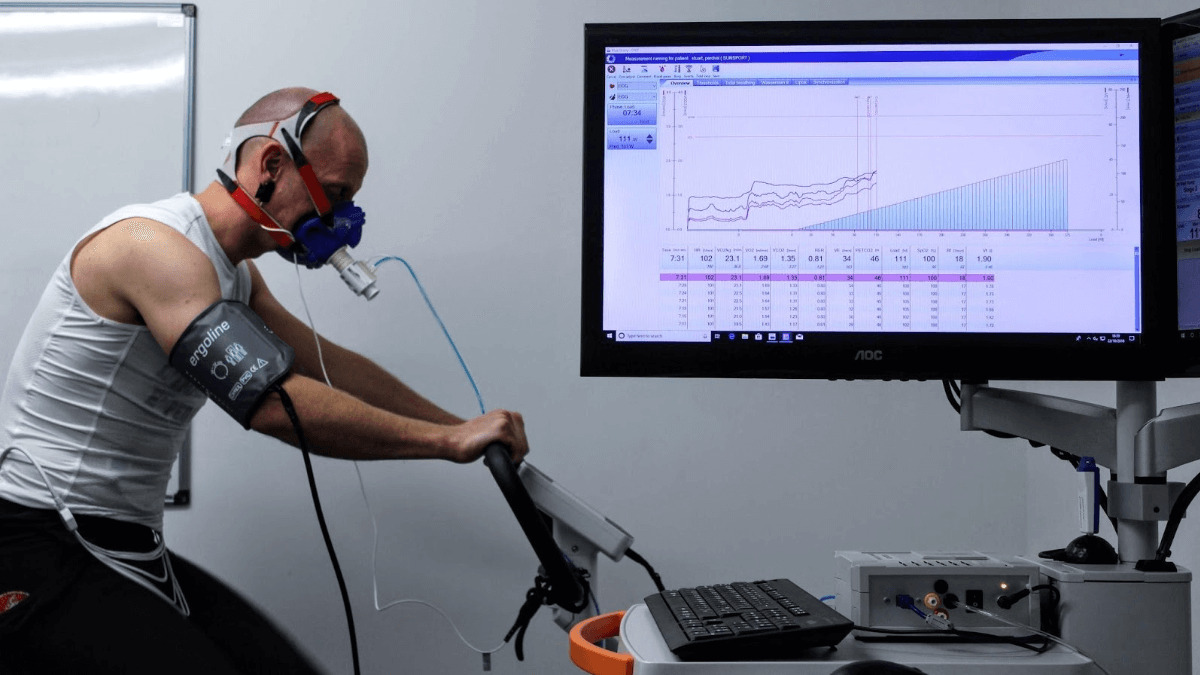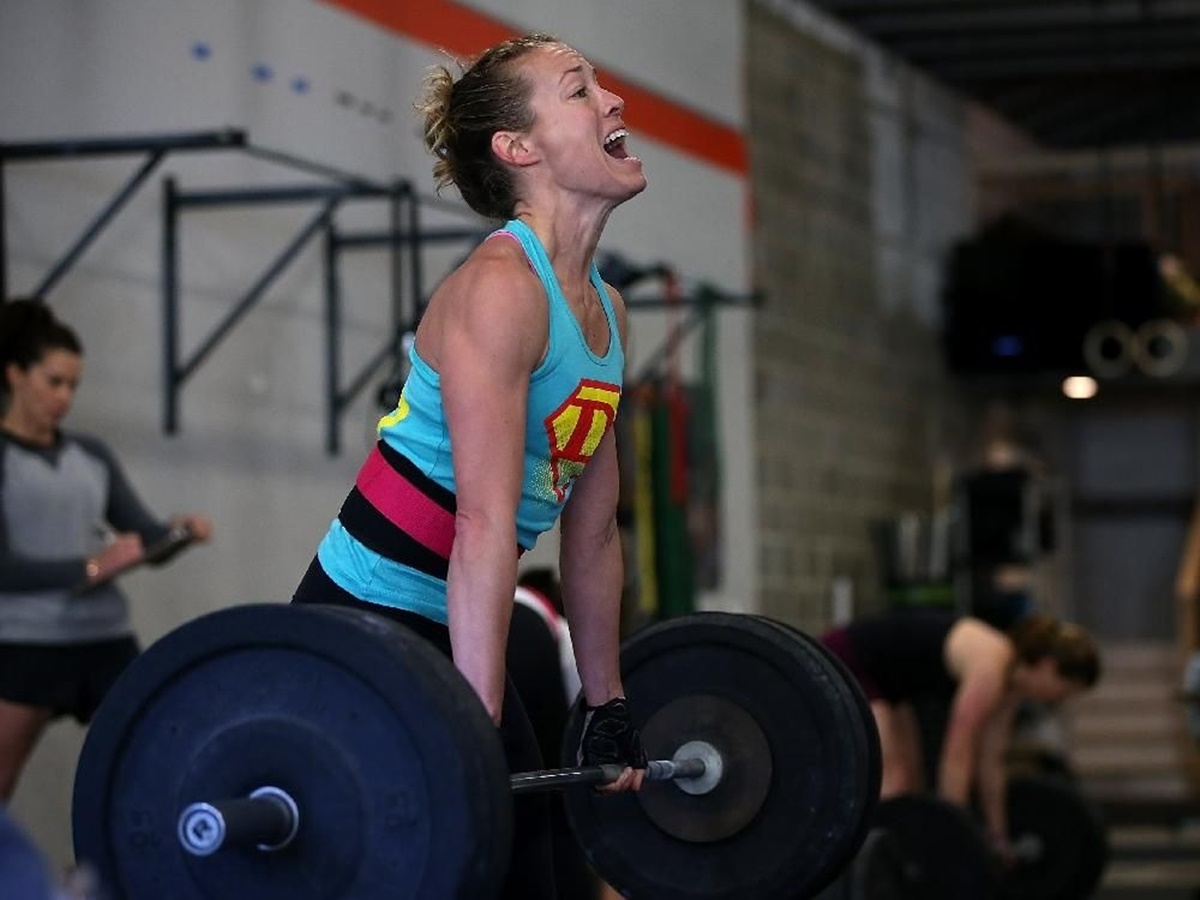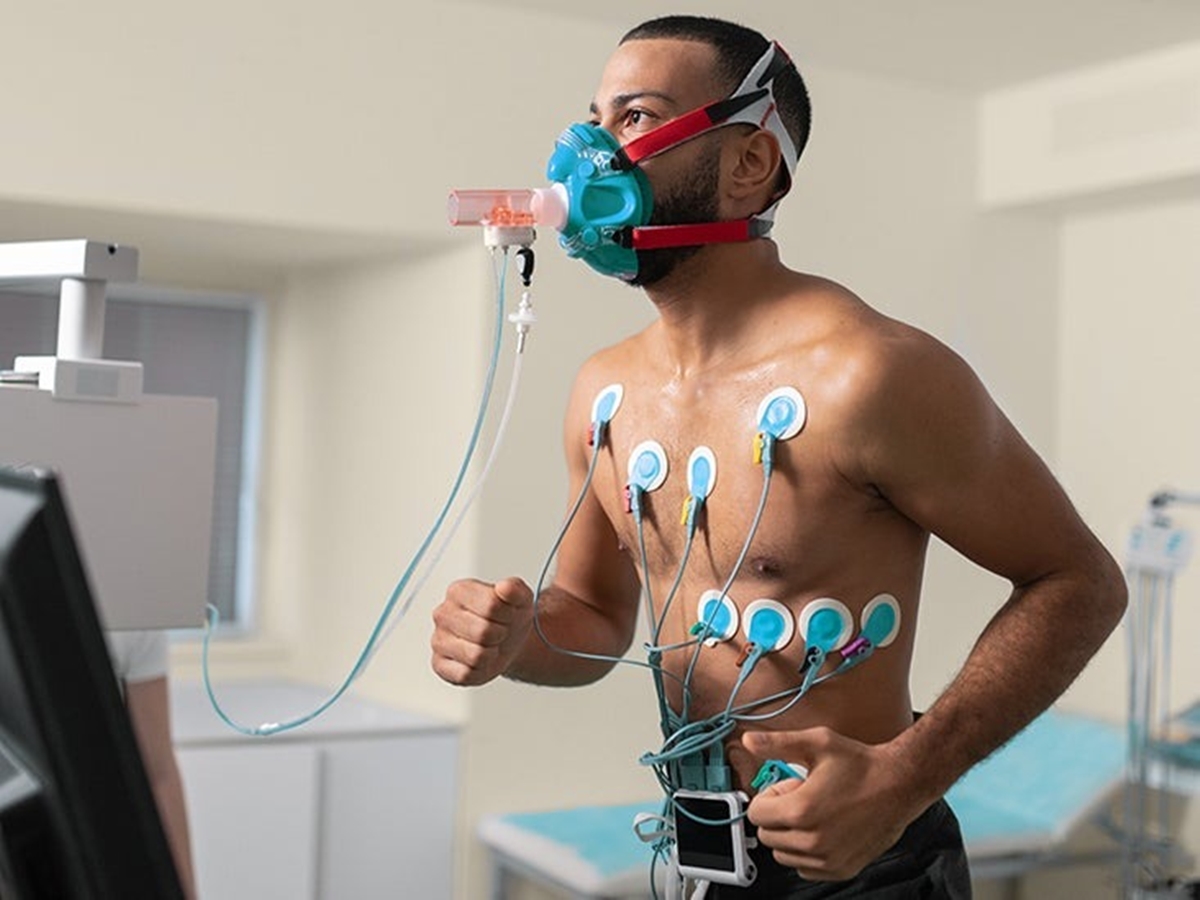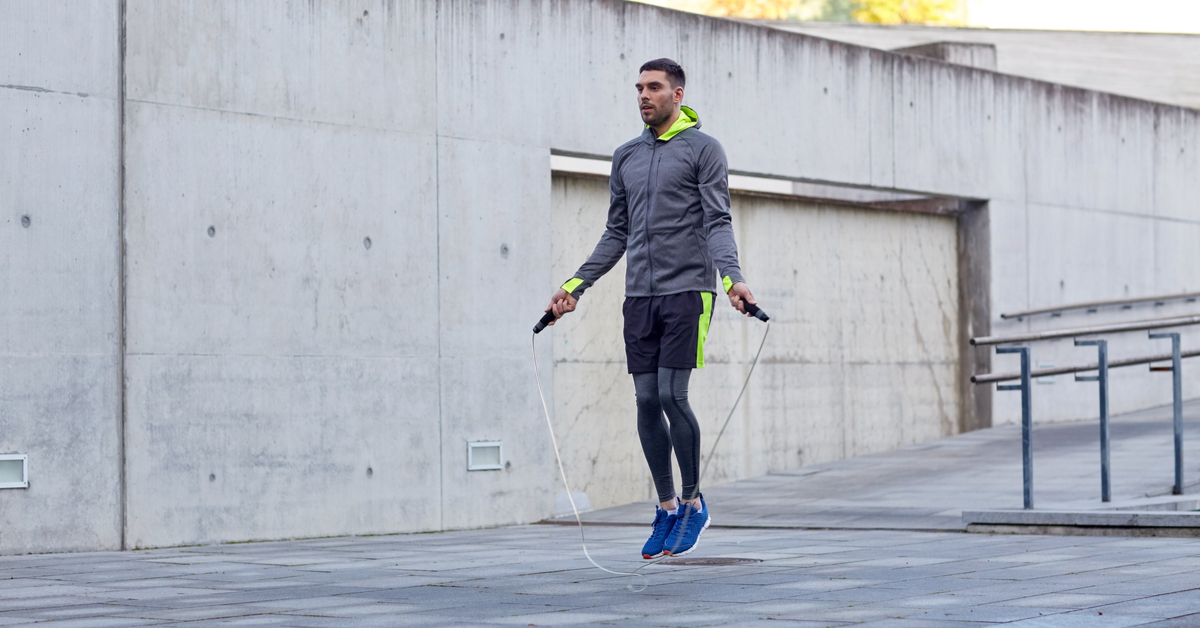Brands
What Is VO2 Max Fitness Tracker
Published: October 17, 2023
Discover the top brands of VO2 max fitness trackers and find out how they can help you optimize your workouts and improve your overall fitness levels.
Introduction
Welcome to the world of fitness tracking! In today’s fast-paced and technology-driven society, staying fit and healthy has become more important than ever. People are increasingly concerned about their physical well-being and are actively seeking ways to track and improve their fitness levels. One key metric that fitness enthusiasts, athletes, and health-conscious individuals often strive to improve is their VO2 max.
VO2 max, or maximal oxygen consumption, is a measure of the maximum amount of oxygen that an individual can utilize during intense exercise. It is widely considered as one of the best indicators of cardiovascular fitness and aerobic endurance. The higher the VO2 max, the more efficiently our body can deliver oxygen to our muscles, allowing us to perform better during physical activities.
With the emergence of fitness trackers, keeping tabs on our health and fitness goals has become easier than ever. Fitness trackers are wearable devices that monitor various aspects of our physical activity, such as steps taken, calories burned, heart rate, and even sleep patterns. In recent years, many fitness trackers have also started incorporating VO2 max tracking capabilities, providing users with valuable insights into their cardiovascular fitness.
In this article, we will delve into the world of VO2 max fitness trackers and explore their benefits, functionality, and considerations when choosing one. Whether you are a seasoned athlete looking to optimize your performance or a fitness enthusiast aiming to track your progress, understanding VO2 max and utilizing a dedicated fitness tracker can greatly enhance your fitness journey.
What is VO2 Max?
VO2 max, or maximal oxygen consumption, is a measure of the maximum volume of oxygen that an individual can consume during intense physical activity. It is a widely recognized and accepted metric for assessing cardiovascular fitness and aerobic endurance. Essentially, VO2 max represents the efficiency with which our body can take in and utilize oxygen.
During exercise, our muscles require more oxygen to produce energy. VO2 max reflects the body’s ability to deliver oxygen to the working muscles and remove carbon dioxide waste efficiently. It is typically measured in milliliters of oxygen per kilogram of body weight per minute (ml/kg/min). Higher values indicate a greater capacity to transport oxygen, resulting in better endurance and performance.
VO2 max can vary significantly from person to person and is influenced by various factors such as genetics, age, gender, and training status. Elite athletes, with their rigorous training regimens, typically have higher VO2 max values compared to sedentary individuals.
In addition to its relevance in assessing cardiovascular fitness, VO2 max is also used as a benchmark for detecting and tracking improvements in individuals with certain medical conditions, such as heart disease or respiratory disorders. By monitoring changes in VO2 max over time, healthcare professionals can assess the effectiveness of interventions and rehabilitation programs.
VO2 max testing is traditionally performed in a laboratory setting where an individual undergoes a graded exercise test, often on a treadmill or stationary bike. During the test, the intensity of the exercise gradually increases, and measures of oxygen consumption and heart rate are taken. These data points are used to determine the individual’s VO2 max value.
While laboratory testing provides the most accurate measurement of VO2 max, it is not easily accessible or convenient for most people. This is where VO2 max fitness trackers come into play, offering a practical and convenient way to estimate and track VO2 max values during everyday activities and workouts.
Importance of VO2 Max in Fitness
VO2 max is a crucial metric in the realm of fitness as it offers valuable insights into an individual’s cardiovascular health and aerobic capacity. Understanding the importance of VO2 max can help individuals set realistic fitness goals, tailor their training programs, and track their progress effectively.
One of the primary benefits of knowing your VO2 max is the ability to gauge your overall cardiovascular fitness level. It provides a quantifiable measure of how efficiently your body can transport and utilize oxygen during physical activity. By monitoring changes in your VO2 max over time, you can assess the effectiveness of your training and determine whether you are improving your endurance and aerobic capacity.
VO2 max is particularly relevant for endurance athletes who participate in activities like running, cycling, swimming, and long-distance events. It is often used to predict an individual’s performance potential in these sports. Athletes with higher VO2 max values usually have superior endurance and are capable of sustaining higher intensity efforts for extended periods.
Additionally, VO2 max can be used as a benchmark for setting personal goals. By comparing your VO2 max with age and gender norms, you can assess how you rank against the general population. This information can help you identify areas for improvement and motivate you to work towards achieving a higher level of cardiovascular fitness.
Furthermore, understanding your VO2 max can assist in establishing appropriate training zones and optimizing workout intensity. By knowing your aerobic threshold, which is typically a percentage of your VO2 max, you can train at different intensities to target specific fitness goals. This knowledge enables you to design a training program that ensures you are working at the appropriate intensity to boost your cardiovascular fitness.
As VO2 max is closely tied to cardiovascular health, monitoring changes in this metric can also provide early indications of potential health issues. A decline in VO2 max over time may signal a decrease in overall fitness or the onset of certain medical conditions. By tracking your VO2 max regularly, you can proactively address any changes and make informed decisions to maintain or improve your cardiovascular well-being.
In summary, VO2 max plays a crucial role in the world of fitness. It helps assess cardiovascular fitness, set realistic goals, tailor training programs, and track progress. By monitoring and improving your VO2 max, you can enhance your endurance, optimize performance, and maintain a healthy cardiovascular system.
What is a Fitness Tracker?
A fitness tracker is a wearable device or smartphone application that monitors and tracks various metrics related to physical activity, sleep patterns, and overall health. These devices have gained significant popularity in recent years as more people prioritize their fitness and well-being.
Fitness trackers utilize a combination of sensors, including accelerometers, gyroscopes, and heart rate sensors, to collect data and provide valuable insights into an individual’s daily activities and fitness levels. These devices are typically worn on the wrist, although some can be clipped onto clothing or integrated into smart clothing.
These trackers are designed to monitor a wide range of metrics, including steps taken, distance traveled, calories burned, heart rate, and sleep patterns. They use algorithms to analyze the data collected and provide users with meaningful feedback on their overall activity levels and health.
One of the primary advantages of a fitness tracker is its ability to enhance self-awareness and motivation. By tracking daily steps and activity levels, individuals can gain a better understanding of their activity patterns and set realistic goals to improve their fitness. Many fitness trackers also offer features such as goal setting, activity reminders, and achievement badges to keep users motivated and engaged.
Beyond tracking basic activity levels, advanced fitness trackers offer more advanced features. They can monitor specific workouts, such as running, cycling, swimming, and strength training, providing users with detailed information on duration, pace, distance, and even heart rate zones during exercise. This information can help individuals optimize their training, make adjustments to their workouts, and track progress over time.
Additionally, many fitness trackers now include features for monitoring sleep quality and duration. These devices use sensors to detect movement and heart rate variability during sleep, providing insights into sleep patterns and determining the quality of rest. By understanding their sleep patterns, individuals can work towards improving their sleep hygiene and overall well-being.
Some advanced fitness trackers are also equipped with GPS capabilities, allowing for more accurate tracking of outdoor activities and providing detailed maps of routes taken. This feature is particularly useful for runners, cyclists, and hikers, as it allows them to monitor speed, distance, and elevation during their workouts.
Overall, fitness trackers have become an essential tool for individuals looking to lead a healthier and more active lifestyle. They provide valuable insights into activity levels, exercise performance, and sleep patterns, empowering users to make informed decisions about their health and fitness goals.
Understanding VO2 Max Fitness Trackers
VO2 max fitness trackers are specialized fitness tracking devices that incorporate the measurement and tracking of VO2 max into their functionality. These trackers are designed to estimate an individual’s VO2 max based on various inputs and algorithms, providing users with valuable insights into their cardiovascular fitness.
VO2 max fitness trackers utilize a combination of sensors, including heart rate monitors and accelerometers, to collect data during physical activities. By monitoring the user’s heart rate and movement patterns, these devices can estimate the intensity of exercise and calculate an approximate VO2 max value. The data collected is then processed using sophisticated algorithms that take into account factors such as age, gender, weight, and activity history to generate a reliable estimation of VO2 max.
It’s important to note that while VO2 max fitness trackers are convenient and provide useful information, they may not be as accurate as laboratory-based testing. Laboratory tests typically involve direct measurement of oxygen consumption and are more precise. However, VO2 max trackers can still provide valuable estimates and trends over time, making them a practical tool for monitoring fitness levels.
When using a VO2 max fitness tracker, it’s important to wear the device properly and ensure proper contact with the skin to capture accurate heart rate data. Many trackers also require calibration during setup to personalize the algorithms and improve the accuracy of the VO2 max estimation.
VO2 max fitness trackers often provide users with additional features and metrics beyond VO2 max estimation. These may include tracking steps, distance traveled, calories burned, sleep patterns, and even specific workout analysis for running, cycling, or other activities. This comprehensive data allows users to gain a holistic view of their fitness and make informed decisions about their training and overall health.
It’s worth mentioning that while VO2 max fitness trackers can provide valuable insights, they should be used in conjunction with other indicators of fitness and health. These trackers should not replace professional guidance or medical advice. They are meant to supplement an individual’s understanding of their fitness levels and act as a tool for motivation and monitoring progress.
In summary, VO2 max fitness trackers offer a convenient way to estimate and track an individual’s cardiovascular fitness levels. While they may not be as accurate as laboratory tests, these devices provide valuable information and trends over time. By combining VO2 max estimation with other fitness metrics, users can gain a better understanding of their overall health and make informed decisions about their fitness journey.
Benefits of VO2 Max Fitness Trackers
VO2 max fitness trackers offer several benefits for individuals looking to improve their fitness and monitor their cardiovascular health. These devices provide valuable insights and assist users in optimizing their training programs, tracking their progress, and staying motivated on their fitness journey.
One of the key benefits of VO2 max fitness trackers is the ability to estimate and track an individual’s cardiovascular fitness level. By having access to an estimated VO2 max value, users can assess their overall aerobic capacity and compare it to age and gender norms. This information serves as a benchmark for setting personal goals and evaluating progress over time.
VO2 max fitness trackers also provide insights into workout intensity and zones. By monitoring heart rate and exercise intensity, these devices can help users determine the appropriate exercise zones to target for specific fitness goals. This feature is particularly beneficial for individuals engaged in interval training, high-intensity workouts, or endurance activities, as it ensures they are training at the right intensity to maximize their results.
Another advantage of VO2 max fitness trackers is their ability to track and analyze various fitness metrics during workouts. These devices can monitor steps taken, calories burned, distance traveled, and even analyze workout data for specific activities like running or cycling. This comprehensive data allows users to have a clear understanding of their performance, enabling them to make adjustments, set new goals, and track their progress more effectively.
VO2 max fitness trackers often come with built-in features for tracking sleep patterns. By monitoring sleep duration and quality, users can gain insights into their overall sleep health. This information can help individuals make changes to their sleep habits, identify patterns that may impact their recovery, and strive for better rest to support their fitness goals.
One of the most significant benefits of VO2 max fitness trackers is their impact on motivation and accountability. These devices provide real-time feedback and allow users to visualize their progress, achievements, and milestones. Many trackers also offer challenges, goal setting, and social sharing features, creating a sense of community and healthy competition. This gamification aspect can be extremely motivating, encouraging users to stay active, reach their goals, and maintain a consistent exercise routine.
Lastly, VO2 max fitness trackers can serve as an early warning system for potential health issues. A decline in VO2 max over time may indicate a decrease in cardiovascular fitness or the presence of certain medical conditions. By regularly monitoring and tracking changes in VO2 max, individuals can identify potential health concerns and take appropriate action, seeking professional advice when necessary.
In summary, VO2 max fitness trackers offer several benefits for individuals looking to improve their fitness and monitor their cardiovascular health. They provide insights into aerobic capacity, track workout intensity, analyze fitness metrics, monitor sleep patterns, boost motivation, and serve as an early indication of potential health issues. These features make VO2 max fitness trackers a valuable tool for individuals on their fitness journey.
How VO2 Max Fitness Trackers Work
VO2 max fitness trackers utilize advanced sensor technology and algorithms to estimate an individual’s VO2 max and provide valuable insights into their cardiovascular fitness. Understanding how these devices work can help users make the most of their tracking capabilities.
The primary sensor used in VO2 max fitness trackers is the heart rate monitor. By tracking the user’s heart rate during physical activity, the device can estimate the intensity of exercise and calculate an approximate VO2 max value. The heart rate data collected is then combined with other inputs, such as age, gender, weight, and activity levels, to generate a reliable estimation of VO2 max.
The accuracy of VO2 max estimation depends on various factors, including the quality of the heart rate monitor and the algorithms employed. Advanced fitness trackers often incorporate machine learning algorithms that continuously analyze data and improve the accuracy of VO2 max estimations over time.
In addition to heart rate monitoring, VO2 max fitness trackers may also include other sensors such as accelerometers and gyroscopes. These sensors detect movement and provide additional data to enhance the accuracy of activity tracking, including steps taken, distance traveled, and calorie expenditure.
The data collected by the sensors is processed through complex algorithms tailored specifically for VO2 max estimation. These algorithms take into account multiple variables and use statistical modeling techniques to generate an estimation that closely aligns with laboratory-measured VO2 max values.
It’s important to note that VO2 max fitness trackers can vary in their accuracy and precision. Factors such as device quality, sensor capabilities, and algorithm sophistication can impact the reliability of the VO2 max estimation. While these devices provide valuable insights, they may not be as accurate as laboratory testing methods. However, they can still offer reliable estimates and trends over time, making them a practical tool for monitoring cardiovascular fitness.
To make the most of a VO2 max fitness tracker, it is important to wear the device properly and ensure it has a secure and comfortable fit. This ensures accurate heart rate monitoring, which is crucial for reliable VO2 max estimation. Some trackers may also require users to perform a calibration process during setup to improve the accuracy of the measurements.
In summary, VO2 max fitness trackers work by utilizing heart rate monitoring and other sensors to estimate an individual’s VO2 max based on inputs such as age, gender, weight, and activity levels. Advanced algorithms process the data collected to generate an estimation that provides insights into cardiovascular fitness. While not as accurate as laboratory testing, these devices offer valuable information and trends to track and monitor fitness levels over time.
Choosing the Right VO2 Max Fitness Tracker
With the wide variety of VO2 max fitness trackers available in the market, choosing the right one can be a daunting task. It’s important to consider several factors to ensure you select a tracker that suits your needs and provides accurate and reliable data.
1. Accuracy: Accuracy is a crucial aspect when choosing a VO2 max fitness tracker. Look for devices with reliable heart rate monitors, advanced sensors, and proven algorithms that have been tested and validated for accuracy. Research customer reviews and expert opinions to gauge the accuracy of different models before making a purchase.
2. Compatibility: Ensure that the fitness tracker you choose is compatible with your smartphone or device. Most trackers sync with dedicated apps that provide detailed insights and analysis of your data. Check if the tracker is compatible with your operating system (iOS or Android) and if it offers the features and functionality you desire.
3. Features: Consider the features that are important to you. Beyond VO2 max estimation, think about the additional metrics and functionalities you want the tracker to track. This could include steps, distance, calorie tracking, sleep monitoring, and specific workout analysis. Choose a tracker that aligns with your specific fitness goals and needs.
4. Design and Comfort: Fitness trackers are designed to be worn throughout the day, so it’s important to choose a device that is comfortable and fits your lifestyle. Consider factors such as size, weight, material, and strap options to ensure a comfortable and secure fit. Some devices also offer customization options, allowing you to personalize the look of your tracker.
5. Battery Life: Battery life is an essential consideration, especially if you plan to wear the tracker for long periods or during extended workouts. Look for trackers with long battery life, preferably lasting at least a few days or more on a single charge. Some devices also offer quick charging features to minimize downtime.
6. User Interface and Ease of Use: Pay attention to the user interface and ease of use of the fitness tracker and its accompanying app. Make sure the tracker has a clear and intuitive display, easy navigation, and user-friendly controls. The app should be easy to navigate and offer a comprehensive view of your data.
7. Price: Consider your budget when choosing a VO2 max fitness tracker. While high-end models may offer more advanced features, there are also budget-friendly options available that still provide accurate data. Determine your priorities and choose a tracker that balances features, quality, and affordability.
8. Brand Reputation and Support: Research the brand reputation and customer support of the fitness tracker you are considering. Look for brands with a good track record of customer satisfaction, reliable support, and regular firmware updates to ensure a smooth and satisfying experience.
By considering these factors when choosing a VO2 max fitness tracker, you can select a device that meets your needs, provides accurate data, and supports your fitness journey effectively.
Limitations and Considerations
While VO2 max fitness trackers can be valuable tools for monitoring and improving cardiovascular fitness, it’s important to be aware of their limitations and consider certain factors when using them.
1. Accuracy: While VO2 max fitness trackers can estimate an individual’s VO2 max, it’s important to remember that these estimates may not be as accurate as laboratory-based measurements. Factors such as device quality, sensor capabilities, and algorithm sophistication can impact the reliability of the estimation. It’s important to view the data provided by the tracker as estimates and trends rather than precise measurements.
2. Individual Variability: VO2 max values can vary significantly from person to person, depending on factors such as genetics, age, gender, and training status. It’s important to interpret your VO2 max reading in the context of your individual characteristics and fitness level. Comparing your results to age and gender norms can provide a general benchmark but should not be the sole determinant of your fitness progress.
3. Environmental Factors: The accuracy of heart rate monitoring can be influenced by environmental factors such as sweat, movement artifacts, and ambient temperature. In certain situations, such as high-intensity workouts or extreme weather conditions, the accuracy of heart rate monitoring may be compromised. Understanding these limitations can help you interpret the data from the tracker more effectively.
4. Calibration and Personalization: Many VO2 max fitness trackers require calibration during setup to personalize the algorithms and improve accuracy. It’s important to follow the manufacturer’s instructions carefully to ensure the tracker provides the most accurate estimation possible. Additionally, the accuracy of the tracker may improve over time as the device learns from your activity patterns and heart rate data.
5. Fitness Level and Training Status: VO2 max fitness trackers provide insights into cardiovascular fitness, but they may not be as effective for individuals with low fitness levels or those who are just starting their fitness journey. VO2 max estimation is more accurate for individuals with a higher aerobic capacity. If you are new to exercise or have a low fitness level, it’s important to focus on overall improvements in your fitness rather than solely relying on VO2 max values.
6. Consulting a Professional: While VO2 max fitness trackers can provide useful information, it’s important to remember that they are not a substitute for professional medical advice or guidance. If you have any concerns about your fitness level or health, it is recommended to consult with a healthcare professional or a qualified fitness expert who can provide personalized advice based on your specific needs and goals.
7. Privacy and Data Security: VO2 max fitness trackers collect and store personal health and fitness data. It’s crucial to choose a tracker from a reputable manufacturer that prioritizes data privacy and provides secure storage of your information. Review the privacy policy and data security measures implemented by the manufacturer before using the device.
By understanding the limitations and considering these factors when using a VO2 max fitness tracker, you can make more informed decisions, interpret the data effectively, and optimize your fitness journey for better results.
Conclusion
VO2 max fitness trackers have revolutionized the way we monitor and improve our cardiovascular fitness. These wearable devices provide valuable insights into our fitness levels, activity patterns, and overall health. While they may not provide laboratory-level accuracy, they offer practical and convenient estimations of our VO2 max values, allowing us to track our progress, set realistic goals, and optimize our training programs.
By choosing a reliable and accurate VO2 max fitness tracker, we can gain a deeper understanding of our cardiovascular fitness. These devices provide insights into our aerobic capacity, workout intensity, and overall activity levels. Additionally, they can monitor sleep patterns, provide workout analysis, and offer features for motivation and goal setting.
It’s important to consider factors such as accuracy, compatibility, features, design, battery life, user interface, and brand reputation when selecting a VO2 max fitness tracker. By choosing the right device that aligns with our needs and preferences, we can make the most of its capabilities and improve our fitness journey.
It is essential to remember the limitations and considerations associated with VO2 max fitness trackers. These devices provide estimates and trends rather than precise measurements, and their accuracy can be affected by various factors such as environmental conditions and individual variability. Understanding these limitations helps us interpret the data from the tracker effectively and make informed decisions about our fitness goals.
Ultimately, VO2 max fitness trackers are powerful tools that empower us to take charge of our cardiovascular health and fitness. By leveraging the capabilities of these devices, we can monitor our progress, stay motivated, and make adjustments to our lifestyle and training programs. They serve as a valuable companion on our journey towards a healthier and fitter life.








